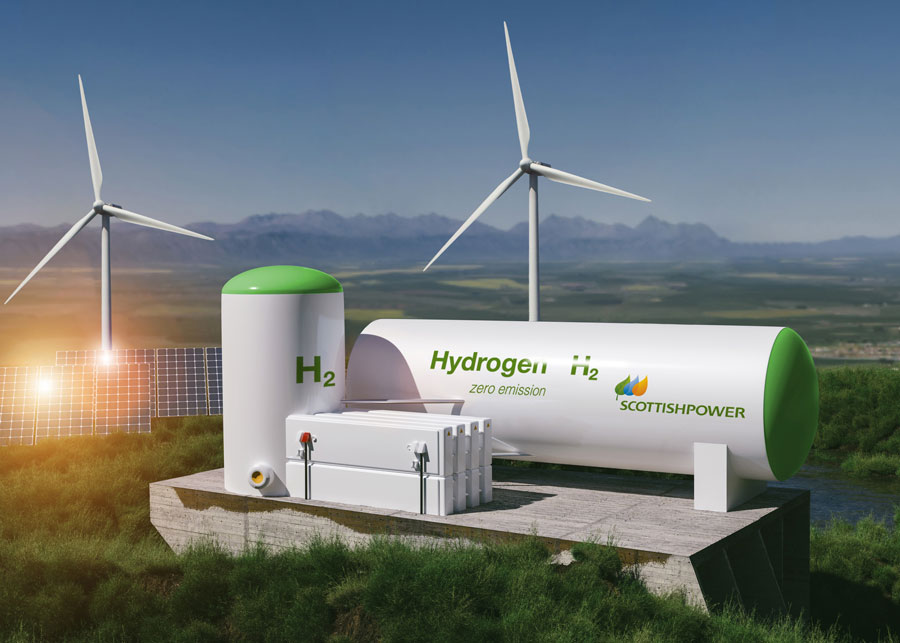Despite the climate crisis, oil production continues to grow and set a new record in 2023. But with the expansion of renewable energies such as wind and photovoltaics, the decline in fossil fuels could come sooner than we imagined.
In 1956, M. King Hubbert, an American geoscientist working for the oil giant Shell, predicted that global crude oil production would peak around the year 2000, before declining and eventually ceasing altogether.
The calculation, based on statistical models of the then-known fossil fuel reserves, scared producers at a time when the fuel was powering an expanding global economy. Many were worried: there was talk of a possible economic disaster, a global financial crisis, and even a total apocalypse.
Hubbert’s prediction, of course, did not come true. In fact, the most easily accessible oil reserves peaked at the beginning of this century. New technologies, however, allowed the pace of production to continue to increase almost every year, until it breaks the record of 96.4 million barrels per day in 2023.
One of these technologies is hydraulic fracturing, known as fracking. This process involves injecting water and chemicals into rocks, creating countless tiny fissures that allow the release of oil and gas.
Fracking began to gain momentum in the United States in the early 2000s and made the country the largest oil producer in the world.
Although we have more oil available than ever, we still talk about “peak oil.” However, analysts increasingly prefer the term “peak extraction.”
“Fifteen to 20 years ago, there was a concern that oil supply would peak, that we would run out of oil,” says Atul Arya, chief energy strategist at the US rating agency S&P Global. “Now the concern is a little different: we are going to hit a peak or plateau in demand.”
Renewables are starting to take over from fossil fuels
Demand for renewable energy is starting to rise faster than demand for traditional fuels, which still power much of the global energy mix.
By 2023, global capacity growth in clean energy – solar PV, wind and others – is set to hit a new record, with the highest growth rate in two decades, according to the International Energy Agency (IEA). Much of this was due to the explosive growth of the solar panel industry, particularly in China.

Aerial view of a huge photovoltaic solar park in China
A view of a solar park in China: the country is a world leader in the production of solar energy and the panels used to generate it
Photo: STR/AFP
Since 2000, the share of renewable sources in the total global electricity mix has increased from 19% to 30%, according to a report published in May this year by the think tank Ember. The analysis predicts that power generation from fossil fuels will likely peak this year.
“This is a critical turning point: obsolete 20th-century technologies can no longer compete with exponential innovations and declining cost curves for renewable energy generation and storage,” notes Christiana Figueres, former head of the UN climate negotiations, in the Ember report.
Investment in renewable energy remains on an upward trend, with the costs of generating clean energy falling and the number of electric vehicles steadily increasing year after year. Experts predict that by 2030 electric cars will account for between half and two-thirds of all sales.
In 2023, investment in clean technologies will for the first time exceed the values ??invested in fossil fuels and should reach 2 trillion dollars (R$ 11.6 trillion) this year, while gas, oil and coal will add up to just over 1 trillion dollars (R$ 5.8 trillion), according to the IEA’s World Energy Investment 2024 report.
The beginning of the end of fossil fuels?
Climate experts emphasize that it will only be possible to reduce emissions and restrict global warming to minimum levels if humanity stops exploiting fossil fuels: the sooner, the better.
A 2015 study published in the journal Nature estimated that limiting global warming to 2 degrees Celsius would require leaving one-third of the world’s oil reserves, half of its gas reserves and more than 80% of its coal reserves in the ground between 2010 and 2050.
And money may end up persuading some industry players to quit. In October 2024, the IEA said that “the push for clean energy is strong enough to meet peak demand for all fossil fuels by 2030,” even under a low climate action scenario. After that, the IEA suggests it would be much harder to justify expensive new fossil fuel projects.
In the World Energy Outlook report, the IEA says climate goals won’t be the only driver of clean energy growth: they will also weigh factors like cost and “intense competition for leadership in clean energy sectors, which are huge sources of innovation.” , growth and jobs economy.”
Indeed, some investors – including large pension funds in the United States and Europe – have begun to move away from fossil fuels, due both to public pressure to meet climate goals and to greater financial risks.

Hydrogen, the key to the energy transition
Oil companies continue to invest in exploration
But Faye Holder of the think tank Influence Map believes that “all companies, perhaps with the exception of BP, are increasing their oil production.” The assessment is based on an analysis of these companies’ communication and their messages about renewable energy.
State oil companies are also betting on fossil fuel profits, although the projects approved now may never become profitable: it takes years for new exploration areas to be equipped with the necessary infrastructure and ready for drilling. As renewables become cheaper, fossil projects could become wasted and obsolete investments.
“This divestment is alarming for shareholders,” Mark van Baal, founder of Dutch advocacy group Follow This, said in a statement released in October. “Oil giants are ignoring the scenarios outlined by the IEA and harming investors by clinging to outdated fossil fuel expansion strategies.”
Mike Coffin, who heads the oil, gas and mining research team at New York think tank Carbon Tracker, says that “some countries could be risking 30% to 40% of their budget if the transition occurs or oil prices fall.” “This will have an immense impact on the economies of these countries, especially on the standard of living in these countries,” he warns.
This scare could be bigger. Despite some notable exceptions, many pension funds around the world still invest in oil and gas. If these companies fail, they will also threaten the pensions of millions of people.
“All of this will help us move away from oil,” says S&P’s Arya. “But it won’t happen overnight.”
The world is projected to continue to need fossil fuels for some time. They are used as a backup power source when wind and solar plants don’t produce enough. And some industries, such as shipping, aviation, and cement, steel, and chemical production, are far from decarbonized. Humanity will also need to find more efficient ways to transport and store clean energy before we can abandon fossil fuels for good.
“The world does not need to choose between ensuring reliable energy supplies and responding to the climate crisis,” IEA Executive Director Fatih Birol said in the organization’s October report. “Clean energy is the future.”
Amanda Coulson-Drasner
dw.com


